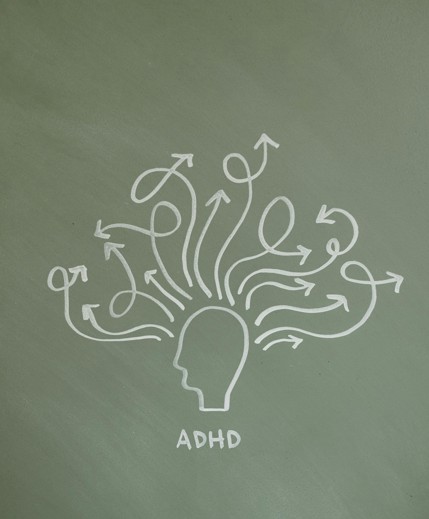
Summary: Guillain-Barré Syndrome (GBS) is a rare autoimmune disorder that attacks the peripheral nerves, often leading to sudden weakness, paralysis, and in severe cases, life-threatening complications. For families facing this diagnosis, the shock and uncertainty can feel overwhelming. Understanding the condition, knowing what to watch for, and being aware of how research is advancing are advantageous — and your support can make a real difference in helping science advance more quickly.
Key Takeaways:
- Guillain-Barré Syndrome is an autoimmune condition that damages peripheral nerves, causing rapid-onset weakness or paralysis.
- Global cases remain rare (~1 in 100,000 annually), though outbreaks in India and China this year highlight the need for vigilance.
- Most cases follow infections like Campylobacter jejuni or viral illness; risk increases with age and in males.
- IVIg and plasmapheresis are the main therapies; roughly 80% of patients regain mobility within months, though some have lasting symptoms.
- The Brain Research Foundation funds neurological research to improve diagnosis, therapy, and recovery outcomes – donations directly advance this mission.
What Exactly Is Guillain-Barré Syndrome?
Guillain-Barré Syndrome is an autoimmune disorder where the body’s immune system mistakenly attacks the peripheral nerves – the communication lines that connect the brain and spinal cord to the rest of the body.
The damage interrupts signals between nerves and muscles, causing early symptoms like tingling, numbness, and weakness in the hands or feet. For some, these symptoms stay mild; for others, they progress quickly, spreading through the body within hours or days.
GBS is not a brain disease, but it affects the entire nervous system’s ability to function – sometimes even impacting the muscles used for breathing. Swift medical attention can make all the difference.
How Common Is GBS, and Why Are 2025 Statistics Important?
Although rare, GBS continues to appear across the world – and 2025 has provided new insight into its global reach.
- A study in Shenzhen, China, recorded 0.7 cases per 100,000 people this year.
- In India, early 2025 saw around 300 confirmed cases and 20 deaths, with reports suggesting potential environmental links.
- Men remain slightly more likely than women to develop GBS, and risk increases with age.
These data points show that while GBS remains uncommon, awareness is vital. Each new case helps researchers understand why and where the syndrome appears – and how to prevent it in the future.
What Causes Guillain-Barré Syndrome to Develop?
The precise cause of GBS is still under investigation, but most cases follow an infection. After fighting off bacteria or viruses, the immune The precise cause of GBS is still under investigation, but most cases follow an infection. After fighting off bacteria or viruses, the immune system can become confused and start attacking healthy nerve cells.
Common triggers include:
- Campylobacter jejuni, a bacterium linked to foodborne illness
- Viral infections such as influenza or SARS-CoV-2
- Rarely, certain vaccinations – though researchers emphasise that the benefits of vaccines far outweigh the extremely low risk of GBS
Environmental conditions, such as poor sanitation or contaminated water, have also been linked to localised outbreaks, like those reported in India this year.
Understanding these triggers helps clinicians respond faster and supports global research aimed at preventing GBS altogether.
What Symptoms Should Families Look Out For?
GBS can progress rapidly – sometimes within hours – so recognising early warning signs is critical.
Seek immediate medical attention if you or someone close to you experiences:
- Tingling or numbness in the hands or feet
- Weakness that spreads through the arms or legs
- Loss of balance or reflexes
- Difficulty swallowing, speaking, or breathing
These symptoms often appear after a respiratory or gastrointestinal infection. Doctors diagnose GBS using nerve conduction studies, electromyography (EMG), and lumbar puncture tests to confirm nerve inflammation. The sooner diagnosis and treatment begin, the better the chances for recovery.
How Is Guillain-Barré Syndrome Treated and Managed?
Treatment for GBS focuses on stopping the immune system’s attack and supporting the body while nerves heal. Two primary therapies are used:
- Intravenous immunoglobulin (IVIg): Antibody infusions that help regulate the immune response.
- Plasmapheresis (plasma exchange): A procedure that filters harmful antibodies from the blood.
These treatments can shorten the illness and improve long-term outcomes. Patients often require hospitalisation, respiratory support, and pain management during the acute phase.
After stabilisation, rehabilitation becomes essential. Physical and occupational therapy help retrain muscles, while emotional support aids psychological recovery.
In a 2025 study from China, about 20% of patients were still unable to walk independently six months after onset, and 40% continued to experience pain or weakness. Even so, most people make significant improvements over time – proof that recovery, though gradual, is possible.
How Does GBS Affect Families and Caregivers?
Beyond the physical challenges, GBS can change daily life for both patients and families.
Imagine a partner, parent, or child suddenly dependent on others for every movement. The emotional impact – fear, exhaustion, uncertainty – can be immense. Financial strain, long rehabilitation periods, and disrupted routines often follow.
Despite these hardships, families show extraordinary resilience. Every regained movement, every breath taken unassisted, becomes a milestone of hope. Support systems, community networks, and awareness initiatives play a vital role in helping families rebuild their sense of normalcy.
What Role Does Research Play in Finding Better Treatment
Every discovery brings us closer to understanding how GBS begins and how it can be stopped.
Ongoing studies are exploring:
- New biomarkers for faster diagnosis
- Therapies that reduce relapse or long-term nerve damage
- Approaches to nerve regeneration that could accelerate recovery
Our Non-Profit Organization, Brain Research Foundation, funds early-stage neuroscience research that leads to tangible results — new insights, new treatments, and renewed hope for patients. Supporting these initiatives means driving innovation in areas that can transform lives.
What Do 2025 Data Reveal About Global GBS Trends?
Recent reports underscore how dynamic and unpredictable GBS remains.
- Outbreaks in India this year have surpassed 300 reported cases, including multiple fatalities.
- In China, research shows that 20% of GBS patients remain unable to walk unaided after six months, and 40% experience ongoing nerve pain.
- Globally, reviews show a gradual increase in incidence, often linked to infections or environmental factors.
These findings highlight why ongoing surveillance and research funding are essential — not just for treatment, but for prevention.
How Can You Help Families Living With Guillain-Barré Syndrome
Knowledge and awareness are powerful forms of support. Sharing information about early symptoms can save lives. Advocating for equal access to treatments like IVIg and rehabilitation can change recovery outcomes.
And for those wondering how to make a lasting difference, research funding is key. Your support enables scientists to explore innovative therapies, improve diagnostic tools, and strengthen medical response systems.
What Does Hope Look Like After GBS?
Guillain-Barré Syndrome may begin in crisis, but recovery often ends in triumph. With treatment, persistence, and ongoing scientific progress, most people regain strength and independence.
At the Brain Research Foundation, we believe hope isn’t abstract – it’s built through knowledge, compassion, and the shared will to make life better for those affected by neurological conditions.
Together, we can bring light, movement, and confidence back to those living through Guillain-Barré Syndrome.
Why Should You Donate to the Brain Research Foundation
When a family learns their loved one may never walk again, or might depend on a ventilator for months, the emotional and financial strain is enormous. Your donation to the Brain Research Foundation helps:
- Fund breakthrough neurological research
- Develop better diagnostics and treatments
- Support awareness programs that educate and empower families
Every contribution, no matter the size, accelerates discovery. Every act of giving fuels progress toward a world where GBS no longer leaves families in fear.
Donate to the Brain Research Foundation and help turn uncertainty into understanding, and recovery into reality.

Reviewed by Terre A. Constantine, Ph.D. (August 2025): Terre A. Constantine, Ph.D., is the Executive Director and CEO of the Brain Research Foundation. Terre is dedicated to BRF’s mission because of her background as a trained scientist. She understands the importance of research and the difficulty of obtaining funding for innovative ideas. She earned her Ph.D. from the University of Pittsburgh Medical School in the Department of Pharmacology with a focus on drug addiction and stroke. She continued her research at The Scripps Research Institute, where she studied neuroregeneration.
Links: LinkedIn | Bloomberg | The Daily Pennsylvania


